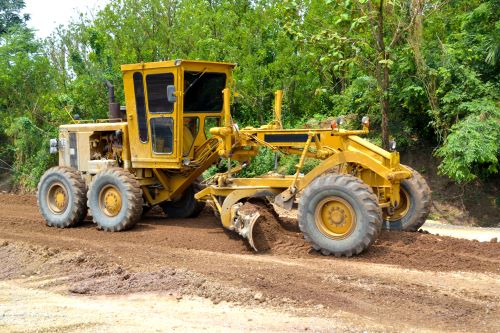
What Equipment Will I Learn to Use in Heavy Equipment Operator Training?

What will you actually be doing during that time?
Monday through Thursday will include classroom training so you learn to operate the heavy machinery with safety and accurate skill. Your instructors will ensure that you have acquired the proper operating techniques and preventative maintenance skills needed while on an actual job site. This will take up five hours each day.
During the remaining five hours of the day, you’ll gain that hands-on, in-field training. Then, on Fridays, you’ll spend the entire day with the heavy machinery, mastering all the skills you learned that week and practicing in areas that you need to perfect before your time at West Coast Training comes to an end.
This balanced exposure sets our students up for success when it’s time to actually acquire a job. So does our accreditation with the National Center for Construction Education & Research (NCCER) under the sponsorship of the Construction Industry Training Council of Washington (CITC). This is important, as NCCER Heavy Equipment Operator Levels 1, 2, and 3 are covered during this eight-week period so that our students are able to pass the appropriate exams, nearly ensuring their future success in the industry.
And while all of this is essential to securing a position in the construction industry, what you really want to know is which pieces of equipment you’ll actually learn how to operate during heavy equipment operator training at West Coast Training. So let’s dig into it.
Backhoes
You might not yet know the name of this piece of heavy machinery, but you’ve certainly seen it around. You may have even had a toy version as a child. It is one of the most versatile pieces of heavy machinery on any construction site and kind of looks like a large spider. Among its many functions, it can be used to dig a trench, uproot trees, grade a road, push dirt, and plow snow, among a considerable amount of additional applications.
It’s very unlikely you would ever step onto a construction site where there wasn’t a backhoe, so it’s the perfect place to start when you sign up for heavy equipment operator training.
Dozers
Also known as a bulldozer, this beast of a machine can push things you wouldn’t imagine it could ever be capable of moving. Among other uses, it is used to move rocks, in building roads, and even on the farm.
Its application is for shallow digging and moving tremendously heavy material or objects a short distance (stumps, boulders, debris). This is another piece of heavy equipment machinery that you’ll find on most job sites.
Graders
This piece of equipment is used in more specific instances. It has a long blade used to create flat surfaces. If you have heard of it before, it was likely in relation to paving roads, as that is its main application, hence it has the secondary name of road grader, among others.
The machine is often used to create a flat road before asphalt is laid down so that it will be applied more smoothly and evenly.
Graders are precise and help to finish a project with accuracy to ensure any following steps will also be accomplished seamlessly.
Excavators
To excavate means to make a hole by digging. And not just randomly digging, but systematically, so it should be no surprise that this is the exact function of this heavy machinery. This is another piece of equipment you have certainly seen as a child, maybe even on the playground as you sit on one end and using levers, move the arm to dig a hole and then move the dirt or debris to another location.
In the construction world, this application would be commonly used in housing projects, road construction, building construction, forestry work, large utility projects, and more.
Loaders
This is another one that you’re likely intimately familiar with. Its sole function is to load up on heavy material and move it to another location. Some of the most common things the loader moves are dirt, debris, snow, gravel, logs, recycled material, and sand.
This is an instrument used on construction sites, but also in many other capacities. It’s also used by FEMA and similar associations to clean up debris after major weather events like hurricanes, as well as in the logging industry and waste management industry. Once you learn to maneuver a loader, career opportunities will open up.
Skid Steer
While the name might sound like a variety of animal you’d find on a local ranch, this is a very versatile, handy piece of machinery found on many job sites. It’s best remarked for its lifting capacity and maneuverability. Depending on its size, the skid steer is used for everything from landscaping and post hole digging to construction, demolition, and debris removal. It’s exceptional in tight spots where access is limited.
The skid steer is driven using differential steering, which means turning is accomplished by operating the left and right wheel pairs at different speeds. The fixed-orientation wheels “skid” or are dragged across the ground, making even zero-radius turning possible. Knowing how to drive this piece of equipment is a definite asset to any heavy equipment operator’s skill set.
As you can determine, there is a reason the course at West Coast Training requires so much time. However, once you’ve put in the work over the eight weeks, you’ll be a highly sought-after newbie who is hirable in numerous industries based on the practical and hands-on experience provided.
At West Coast Training, we set our students up to succeed. While it’s up to you to put in the time and dedication, if you’re committed to learning, we are here to support you in every capacity. This includes preparing you for your industry exams and assisting you in the hiring process.
Does a course in heavy equipment still interest you? Reach out to our team today.
